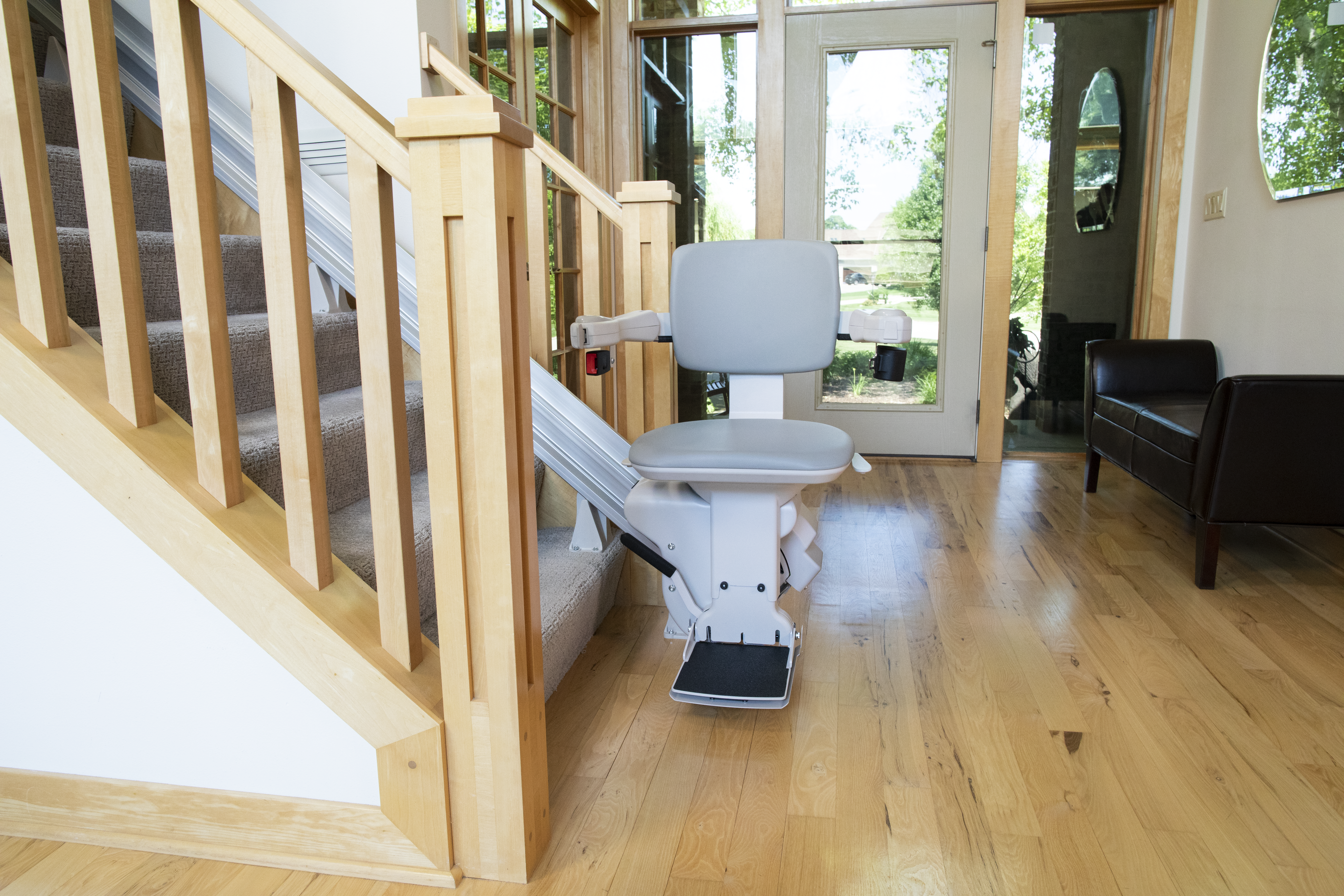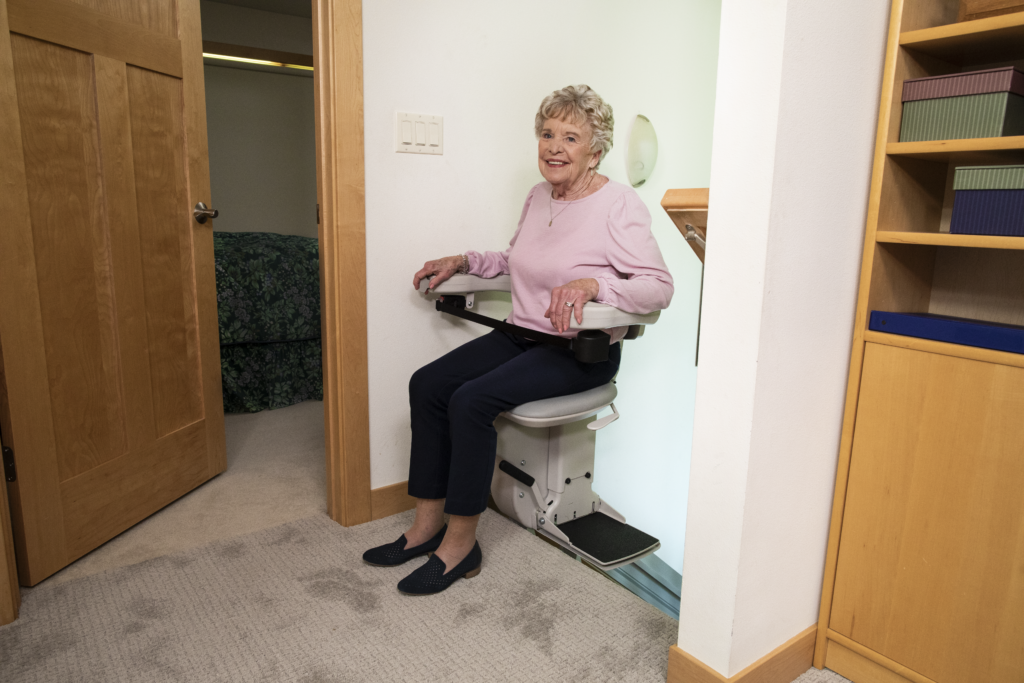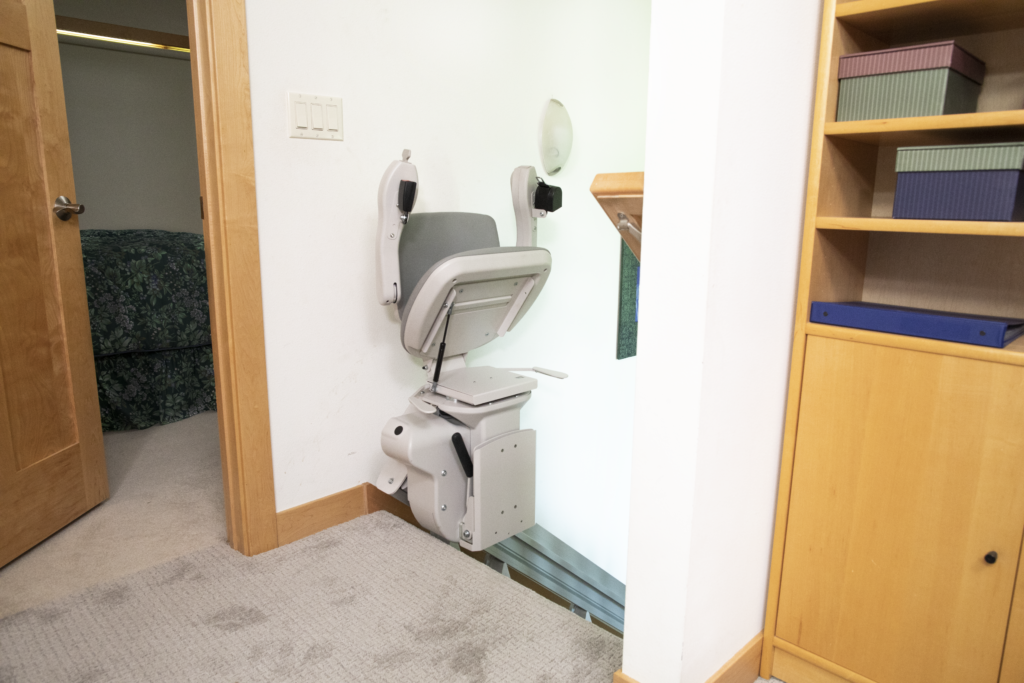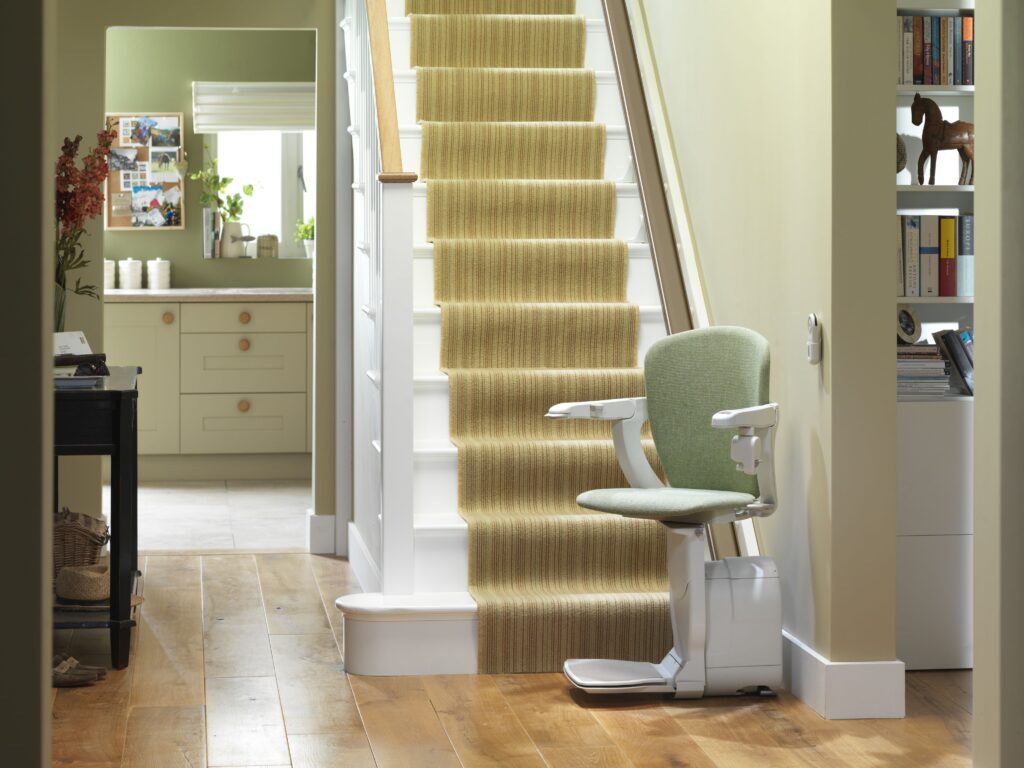Stair lifts contain rechargeable batteries in the chassis of the chair, and properly maintaining these batteries is essential to ensure your stair lift works when you need it. If you’re considering purchasing a stair lift or are experiencing issues with your current stair lift, it’s important to know:
- How to choose the right battery
- How to care for a stair lift battery
- The signs of a failing stair lift battery
- The cost and warranty of a stair lift battery
How Are Stair Lifts Powered?
Both straight stair lifts and curved stair lifts run on batteries that receive a constant charge from the main power supply. Many stair lifts use a battery-powered drive system that is continuously charged by a battery charger plugged into an outlet near your stairs.
This power supply keeps the batteries charged and your stair lift ready to use at all times. Even in the event of a power outage, the charged batteries will allow you to still use your stair lift.
Generally, stair lifts have two 12-volt batteries wired in series that power a 24-volt motor. Depending on the make and model, the batteries range from 2.6 Ah (amp-hours) to 12 Ah. Higher amperages provide more power, and high-power batteries are usually used for heavy-duty stairlifts.
The type of battery used is usually sealed lead acid (SLA)/valve-regulated lead acid (VRLA). These are two names for the same cell. Stairlift batteries also often use absorbent glass mat technology to allow for higher amperage and faster charging. An SLA/VRLA design offers a rechargeable, maintenance-free battery that can withstand high and low temperatures and has a long service life.
The batteries are charged with an external battery charger. The battery charger needs to supply continuous voltage to charge the batteries, and the voltage should be checked during service.
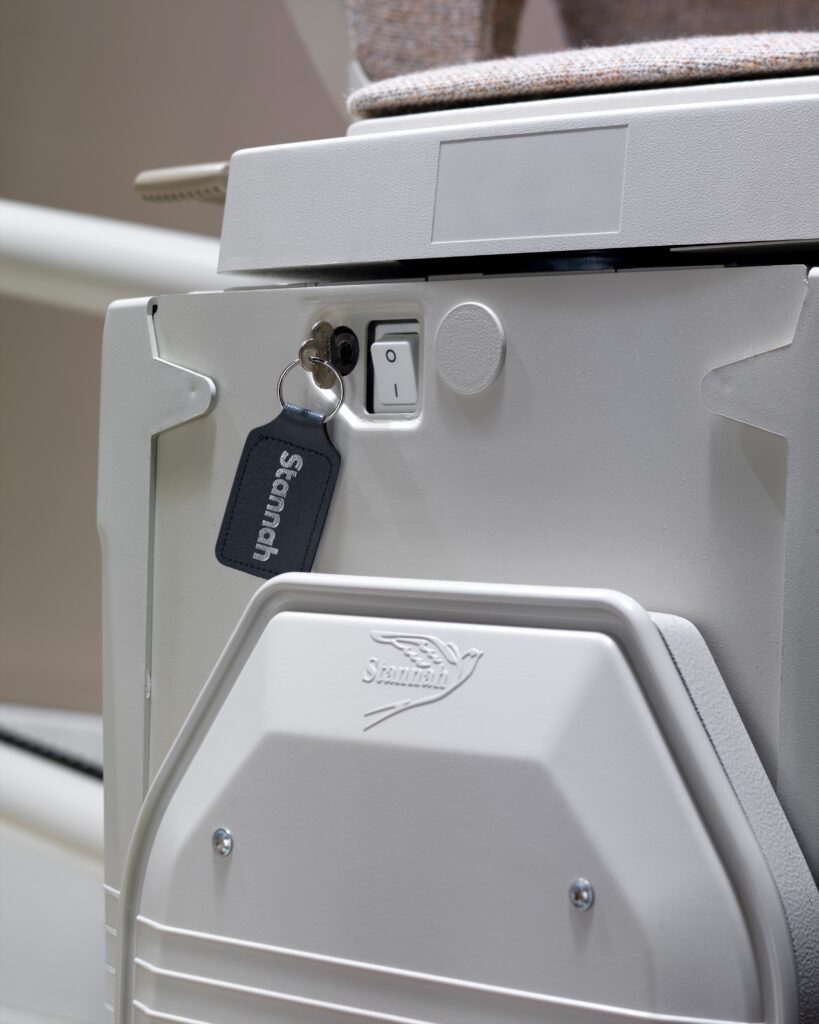
Stair Lift Battery Maintenance & Care
There are a few simple things you can do to extend the lifespan of your stair lift batteries:
- Invest in long-lasting, high-performance batteries that are compatible with your stair lift. This will reduce service and replacement costs.
- Keep your stair lift plugged into the power outlet and turned on all the time so that it is constantly charging.
- Run your stair lift a few times a week. If you go away for more than a week, it’s a good idea to ask someone to come by and run your stair lift while you’re gone.
- Schedule a stair lift service and maintenance call with a professional technician once a year. During service, the technician will:
- Test the batteries with a load tester to confirm the battery level and cell stability
- Check that the charging circuit is delivering the correct voltage to the rail contacts and the mainboard
- Check that there are no electrical problems like inadequate grounding or short circuits
Signs of a Failing Battery
Here are some common signs that your stair lift batteries are failing:
- Your stair lift is moving slower than usual
- Your stair lift moves a few inches and stops
If you notice any of these signs, you should schedule a service call right away before your lift stops working.
If you try to use your stair lift and it won’t move, and there is no beeping or indicator light, your battery has likely already failed. Another indicator that your battery is fully drained is if the battery won’t charge at its usual charging point. This can happen if you leave the stair lift unused for several months, which is why it’s important to run your stair lift a couple of times a week.
Stair Lift Battery Replacement
The average battery life for a stair lift ranges from three to five years. The lifespan varies depending on the amount of use, length of stairs, load on the system, the size of the equipped battery, and the age of the lift. If you rely on your stair lift and use it every day, you should replace the batteries minimum every three years to prevent breakdowns.
Batteries can be replaced by a lift service technician. The tech will use a load tester to check the battery level and cell stability before replacing it. In some cases, only one battery will test poorly, but you should still replace both batteries. The second battery is likely close behind, and replacing both batteries at the same time will save you money on a second service call.
During service, the tech will also check the voltage, the circuit, and the wiring for any grounding or circuit issues.
Battery replacement requires partially dismantling the chassis, and installing the new batteries incorrectly can create safety risks when using the stair lift. This is why you should not attempt to change the batteries on your own.
Cost & Warranty of Stair Lift Batteries
The cost of replacing your stair lift batteries depends on the amperage, the size, the manufacturer, and the make and model of your stair lift. Batteries should always be replaced as a pair. Your service technician will determine which size of battery is required for your lift. They will ensure that the stair lift batteries are compatible with the model of your stair lift.
When considering the cost of replacement batteries, you should also take into account the cost of a service visit. You should always contact a certified technician for stair lift battery replacement to avoid voiding any warranties and ensure that your batteries are correctly installed for safe stair lift operation.
Contact DME Elevators & Lifts For Stair Lift Battery Service
If you notice any of the signs of failing stair lift batteries or are in need of stair lift battery maintenance, don’t hesitate to contact DME Elevators & Lifts for reliable service. We’ve been providing accessibility solutions, including indoor and outdoor stair lifts, for over 45 years, and we employ fully trained and licensed technicians so you can use your stair lift with comfort and peace of mind.
If you’re considering installing a stair lift to regain independence in your home, contact us for a free, in-home assessment.

